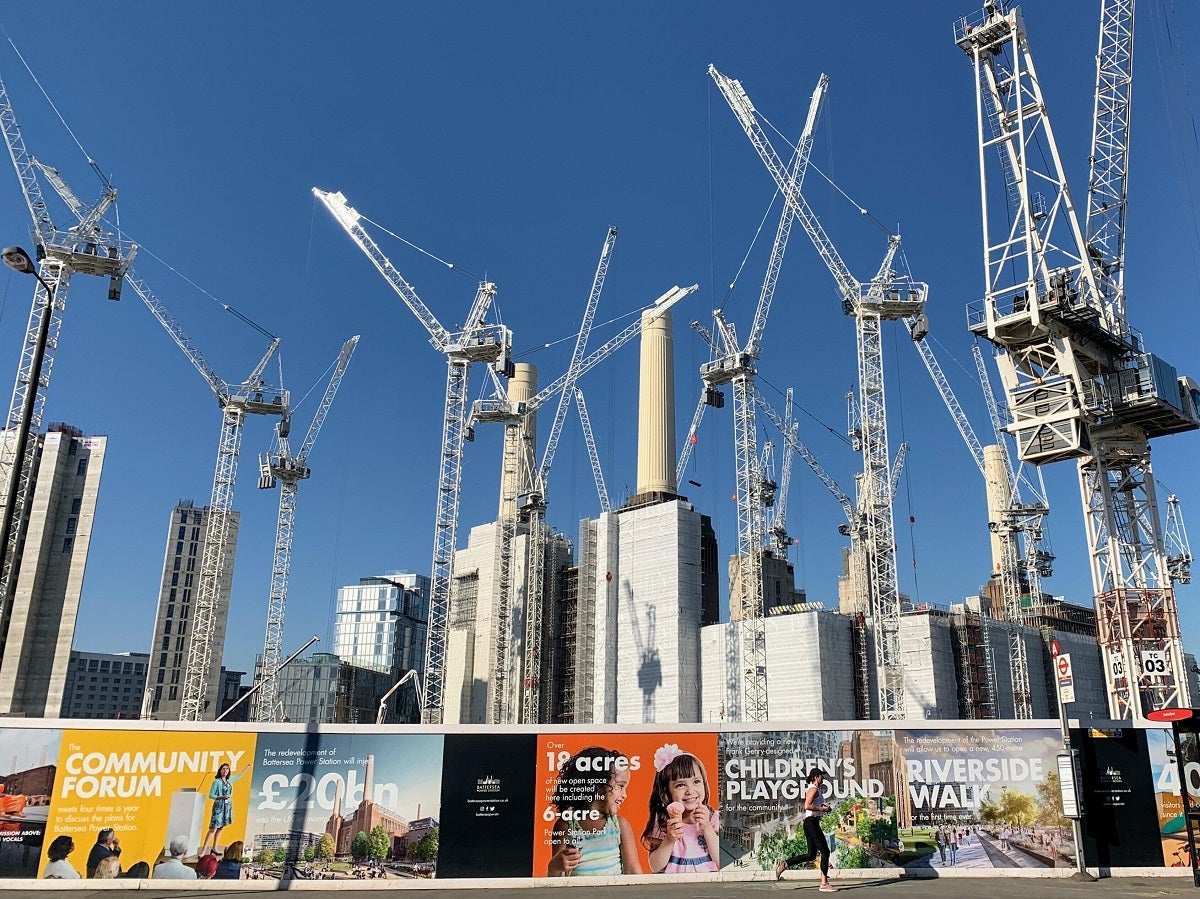
For centuries, engineers have designed and built physical assets such as dams, tunnels, bridges and buildings. Now they increasingly produce a digital asset alongside the physical one: a digital twin that provides an interactive, real-time model of a building or other piece of infrastructure.
Digital engineering involves building up the data that forms and informs a digital twin. Much as a software engineer produces a programme, digital engineers develop what’s known as a building information model, or BIM, which is a digital representation of a physical asset that includes data about its design, construction and future function. Right from the start of an engineering project, they aim to create and capture this data in a structured and sensible way, and collaborate with other stakeholders to ensure a high-quality result.
Digital engineering involves building up the data that forms and informs a digital twin
BIM is an incredibly useful technique as it allows architects and engineers to test the performance of a design before it is built, as well as optimise the performance of an asset throughout its entire life cycle.
But digital engineering also encompasses drone imagery, augmented and virtual reality, internet of things sensors, advanced building materials and even artificial intelligence and machine-learning. Along with BIM, these technologies can be used to inform a digital twin and ensure it accurately represents the real-time attributes of its physical counterpart.
As these digital technologies and capabilities increase and improve, engineers will need new skills to take full advantage of them. In other words, digital engineers will have both traditional engineering skills and software engineering know-how, including knowledge of 3D modelling and data-science techniques, and how they can be applied to engineering projects.
Building teams
Given how hard it is to become an accomplished civil, structural or mechanical engineer, a huge amount of talent and determination is needed to acquire all these additional skills. As such, individuals with complete mastery of digital engineering are rare. In fact, it’s more likely that a team of people with different skillsets will come together to deliver digital engineering.
These teams will need to collaborate effectively with hundreds of advisers, designers, sub-contractors and other stakeholders to produce an asset and its digital twin. The whole process generates a vast amount of data that needs to be captured and stored; data that can come from a wide range of traditional and non-traditional sources, including paper-based documents and different technological systems.
To capture, structure and make sense of all this information successfully, you need an open platform that can integrate any data source. Building such a platform is Asite’s number-one mission. In effect, it will turn all the different languages engineering teams speak into one lingua franca, or common language, so everybody can easily exchange information and communicate properly. This will ensure data flows smoothly across the entire life cycle of an asset, not just the design and construction stage.
Managing performance
During the lifetime of an asset, such as an office building, its owners will engage a whole range of companies and individuals to maintain and operate it, from janitors who keep the place clean to maintenance teams who keep the lights on. This all falls under the banner of facilities management. And digital twins will revolutionise the way the sector operates by providing a dynamic, real-time model of an asset’s environmental and operational performance.
Why is this important? Well, imagine if a piece of equipment that’s hidden behind a wall suddenly stops working. The only way maintenance teams can figure out what’s wrong is to break down that wall and take a look behind it. But with a digital twin at their disposal, they can see exactly what the problem is and assess the best way to fix it without having to disrupt the fabric of the building, which is a huge time and cost-saving.
This ability to see exactly what’s happening inside a physical asset relies on something called a semantic data model, which quite simply captures the “meaning” of your data items and the relationships between them. In other words, if you approach the development of a digital twin in a thoughtful way across the course of the design and construction process, rather than just throwing data into it, facilities management teams will have a meaningful digital model to refer to once they take over management of an asset.
The process of capturing and storing this data begins when an asset is still just an idea. It’s the start of a golden thread of information that runs right through the life cycle of a project, a thread that grows and gathers more strands until it develops the heft and weight of a digital twin. Only an open, easy-to-use platform can successfully capture and weave together all these strands. And this, as much as anything, is the key to unlocking all that digital engineering has to offer.

For centuries, engineers have designed and built physical assets such as dams, tunnels, bridges and buildings. Now they increasingly produce a digital asset alongside the physical one: a digital twin that provides an interactive, real-time model of a building or other piece of infrastructure.
Digital engineering involves building up the data that forms and informs a digital twin. Much as a software engineer produces a programme, digital engineers develop what’s known as a building information model, or BIM, which is a digital representation of a physical asset that includes data about its design, construction and future function. Right from the start of an engineering project, they aim to create and capture this data in a structured and sensible way, and collaborate with other stakeholders to ensure a high-quality result.
